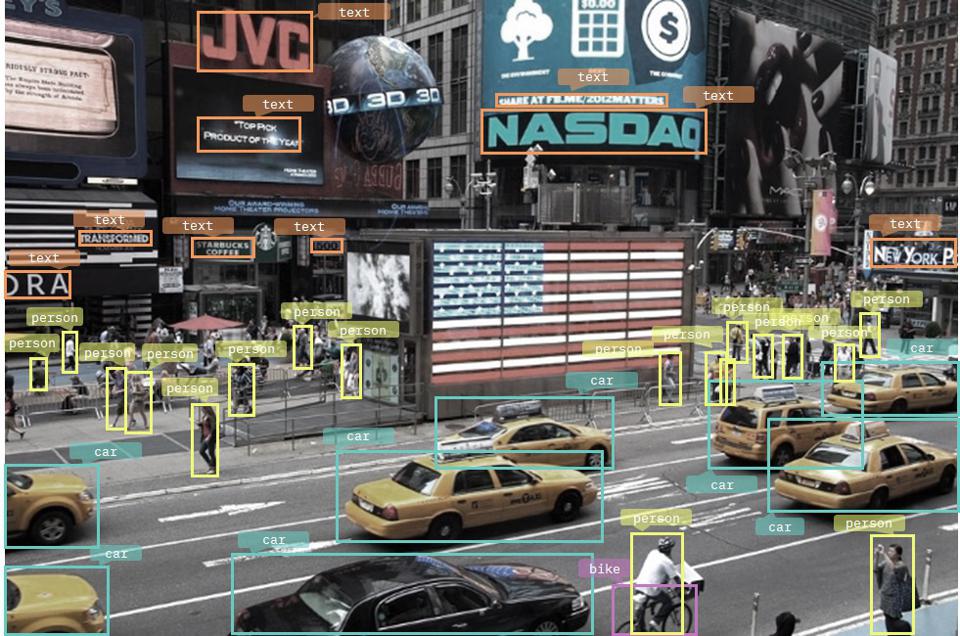
Artificial neural networks are often mentioned when talking about artificial intelligence. However, how do they compare? What are the differences? This article will address artificial neural network, Recurrent neural network, Decision trees, as well Transfer learning. While there are many differences, the key points will remain constant. Let's examine the two main types AI to find out which is most suitable for your application. Here's how it works.
Artificial neural networks
The key question in machine learning is whether traditional or artificial neural networks are better at problem solving. Machine learning algorithms offer a great opportunity to improve the quality and efficiency of decision-making. However, there are significant differences between artificial neural networks and machine learning. This article will examine the key differences between them. Below are the major differences between both methods. You can compare the benefits of each to find which method is right for you.
AI techniques employ hidden layers of neurons to process information. A neural network is trained by repeatedly inferring correct answers from inputs. Then, the weights of the neurons are adjusted based on those results. Artificial intelligence can predict with greater accuracy than human-made programs. There are many drawbacks to artificial neural network. Machine learning algorithms rely on a set of rules and techniques to determine the best solutions to problems.

Recurrent neural networks
Machine learning vs recurrent neural network: The first thing to consider when comparing the two methods is whether one is more suitable for your use case. While many people use neural networks to translate Spanish text into English, there are differences between them. Recurrent neural networks are able to predict the order in which each word in an input sentence will appear in an output sentence. In other words, recurrent neural networks are better at solving complex problems such as speech recognition or language translation.
However, feedforward networks cannot handle sequential data or time series. Recurrent neural network, on the contrary, can retain information from previous iterations. This makes them perfect for these situations. Recurrent neural networks are the basis behind the major advances of deep learning. They have helped to solve the most difficult problems in traditional machine learning. Recurrent neural networks are able to learn from past events and incorporate past data.
Decision trees
When choosing between neural networks or decision trees, it is important that you understand the differences and how they work. Decision trees, unlike neural networks, are simple to program and understand. The trees account for a range of factors. They include an initial variable, which is divided into two child group and an output. The selected feature determines the tree's conclusion. This method isn't as easy to interpret as neural networks and can lead to difficult decisions for many users.
There are many differences between decision trees or neural networks. This may explain why they are often combined. Once trained, decision trees work faster while neural networks take longer. The decision trees also eliminate input features that are not necessary, while neural networks can use all of them. A neural network model can be more easily understood than decision trees because it only models axis parallel splits of data.

Transfer learning
One of the key differences between neural networks and machine learning is that transfer learning models are trained in simulated environments. This method is already a crucial step in the development of self-driving cars. Although it is difficult and risky to train a model under real conditions, simulations allow you to transfer parts of your model into real-world training. Transfer learning is a new technique being used in many areas, including computer vision and natural-language processing.
There are many benefits to this method over training a brand new model. This method can help reduce the amount of large, labelled training data by allowing you to train a new machine using unlabelled data. This approach also helps to generalize machine problem solving, which reduces the amount of resources required to train a new model. Researchers have discovered that this approach increases the accuracy of models in both simulations and real-world settings.
FAQ
AI: Good or bad?
AI is seen in both a positive and a negative light. On the positive side, it allows us to do things faster than ever before. Programming programs that can perform word processing and spreadsheets is now much easier than ever. Instead, we ask our computers for these functions.
People fear that AI may replace humans. Many believe that robots may eventually surpass their creators' intelligence. This means that they may start taking over jobs.
What does AI look like today?
Artificial intelligence (AI), a general term, refers to machine learning, natural languages processing, robots, neural networks and expert systems. It's also known by the term smart machines.
Alan Turing was the one who wrote the first computer programs. He was interested in whether computers could think. He presented a test of artificial intelligence in his paper "Computing Machinery and Intelligence." This test examines whether a computer can converse with a person using a computer program.
In 1956, John McCarthy introduced the concept of artificial intelligence and coined the phrase "artificial intelligence" in his article "Artificial Intelligence."
Many AI-based technologies exist today. Some are easy to use and others more complicated. They can be voice recognition software or self-driving car.
There are two types of AI, rule-based or statistical. Rule-based uses logic in order to make decisions. To calculate a bank account balance, one could use rules such that if there are $10 or more, withdraw $5, and if not, deposit $1. Statistical uses statistics to make decisions. For example, a weather prediction might use historical data in order to predict what the next step will be.
Is Alexa an artificial intelligence?
Yes. But not quite yet.
Amazon has developed Alexa, a cloud-based voice system. It allows users interact with devices by speaking.
The Echo smart speaker first introduced Alexa's technology. Other companies have since used similar technologies to create their own versions.
These include Google Home and Microsoft's Cortana.
Which countries lead the AI market and why?
China leads the global Artificial Intelligence market with more than $2 billion in revenue generated in 2018. China's AI industry is led by Baidu, Alibaba Group Holding Ltd., Tencent Holdings Ltd., Huawei Technologies Co. Ltd., and Xiaomi Technology Inc.
China's government is heavily investing in the development of AI. The Chinese government has set up several research centers dedicated to improving AI capabilities. These centers include the National Laboratory of Pattern Recognition and State Key Lab of Virtual Reality Technology and Systems.
Some of the largest companies in China include Baidu, Tencent and Tencent. All of these companies are working hard to create their own AI solutions.
India is another country making progress in the field of AI and related technologies. The government of India is currently focusing on the development of an AI ecosystem.
What does the future look like for AI?
Artificial intelligence (AI), which is the future of artificial intelligence, does not rely on building machines smarter than humans. It focuses instead on creating systems that learn and improve from experience.
In other words, we need to build machines that learn how to learn.
This would allow for the development of algorithms that can teach one another by example.
We should also look into the possibility to design our own learning algorithm.
It is important to ensure that they are flexible enough to adapt to all situations.
What is the current state of the AI sector?
The AI industry is expanding at an incredible rate. By 2020, there will be more than 50 billion connected devices to the internet. This will allow us all to access AI technology on our laptops, tablets, phones, and smartphones.
Businesses will need to change to keep their competitive edge. If they don’t, they run the risk of losing customers and clients to companies who do.
This begs the question: What kind of business model do you think you would use to make these opportunities work for you? Could you set up a platform for people to upload their data, and share it with other users. Perhaps you could offer services like voice recognition and image recognition.
Whatever you decide to do in life, you should think carefully about how it could affect your competitive position. Although you might not always win, if you are smart and continue to innovate, you could win big!
Where did AI come from?
In 1950, Alan Turing proposed a test to determine if intelligent machines could be created. He believed that a machine would be intelligent if it could fool someone into believing they were communicating with another human.
John McCarthy took the idea up and wrote an essay entitled "Can Machines think?" In 1956, McCarthy wrote an essay titled "Can Machines Think?" It was published in 1956.
Statistics
- According to the company's website, more than 800 financial firms use AlphaSense, including some Fortune 500 corporations. (builtin.com)
- The company's AI team trained an image recognition model to 85 percent accuracy using billions of public Instagram photos tagged with hashtags. (builtin.com)
- In 2019, AI adoption among large companies increased by 47% compared to 2018, according to the latest Artificial IntelligenceIndex report. (marsner.com)
- A 2021 Pew Research survey revealed that 37 percent of respondents who are more concerned than excited about AI had concerns including job loss, privacy, and AI's potential to “surpass human skills.” (builtin.com)
- More than 70 percent of users claim they book trips on their phones, review travel tips, and research local landmarks and restaurants. (builtin.com)
External Links
How To
How to Setup Google Home
Google Home is an artificial intelligence-powered digital assistant. It uses advanced algorithms and natural language processing for answers to your questions. With Google Assistant, you can do everything from search the web to set timers to create reminders and then have those reminders sent right to your phone.
Google Home integrates seamlessly with Android phones and iPhones, allowing you to interact with your Google Account through your mobile device. An iPhone or iPad can be connected to a Google Home via WiFi. This allows you to access features like Apple Pay and Siri Shortcuts. Third-party apps can also be used with Google Home.
Google Home offers many useful features like every Google product. Google Home can remember your routines so it can follow them. It doesn't need to be told how to change the temperature, turn on lights, or play music when you wake up. Instead, just say "Hey Google", to tell it what task you'd like.
These are the steps you need to follow in order to set up Google Home.
-
Turn on Google Home.
-
Hold the Action button at the top of your Google Home.
-
The Setup Wizard appears.
-
Select Continue
-
Enter your email address.
-
Register Now
-
Google Home is now available